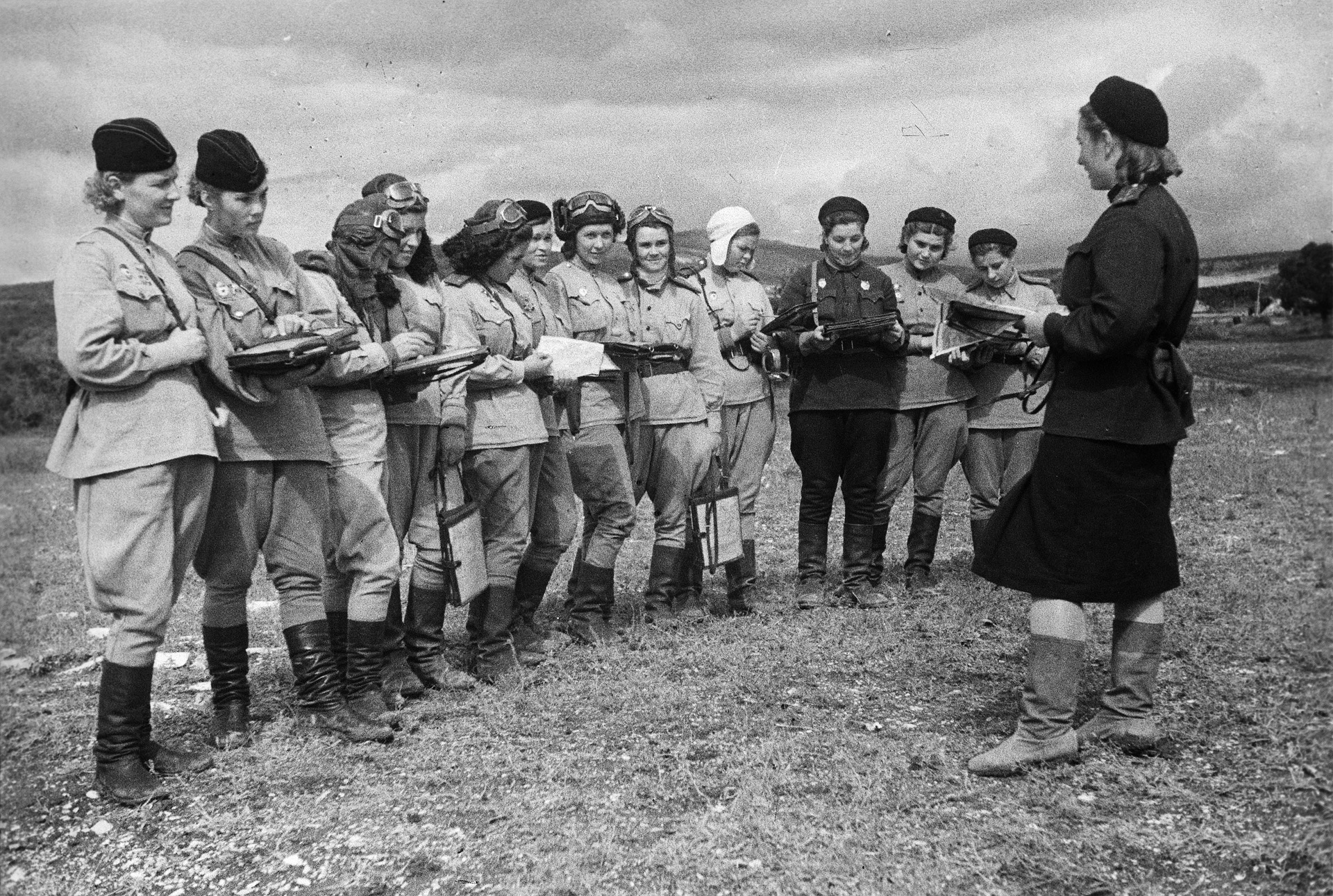The 46th Guards Aviation Regiment «Night Witches» – Serafima Amosova Assigns a Combat Mission
1943
It was in Novorossiysk that Khaldei’s lens first captured these ‘celestial beings’ (also known as the ‘Night Witches’) of the 46th Guards Women’s Night Bomber Aviation Regiment. The fates of these legendary pilots remained close to his heart even after the war ended.
The ‘Night Witches’ was the name given by the Nazis to the legendary female aviation regiment of the Soviet Air Force during the Great Patriotic War, established in 1941. The formation was composed of volunteers — female students aged 20 to 25. The ‘Night Witches’ conducted over 20,000 sorties, dropping numerous bombs on enemy positions. All of this was performed using Po-2 biplanes made of plywood, which were not even intended for combat.
As they approached their targets, the pilots would cut their engines and glide silently to the bomb drop locations. The only sound was the soft rustle of the wind beneath the biplanes’ wings, resembling the noise of a witch’s broom. This is why the Germans called the Soviet pilots the ‘Night Witches’.
At first, these Soviet ladies were not taken seriously and were referred to as ‘Dunya’s Regiment’ — after their commander, Yevdokia Bershanskaya. They sometimes seemed less than serious: for instance, one of the pilots slept with flowers under her pillow and would take a bunch of snowdrops with her on missions. Another of the ladies promised to write a thesis on ‘Freckle Removal via Frostbite’ after suffering frostbite on her cheeks during a flight. These navigators were sometimes referred to as ‘navigator chicks’. In one squadron, there were even ‘Commandments of the Women’s Regiment’ hanging on the wall which stated: “Don’t steal a suitor from your comrade! Don’t trample your boots. There won’t be new ones! Be proud; you are a woman. Look down on men!”
Yes, the ‘Night Witches’ remained young and mischievous ladies who, between sorties, discussed men and embroidery. However, they fought the enemy intently — and they grieved their losses solemnly too. “Thirty-two girls died in our regiment,” wrote Irina Rakobolskaya, “among them those who burned alive in their planes, were shot down over targets, or died in crashes or from illnesses. These were all our wartime losses….”
In total, the ‘Night Witches’ carried out 23,672 combat sorties, and dropped over 3,000 tons of bombs and 26,000 incendiary shells. The combined efforts of the 46th Guards Women’s Night Bomber Aviation Regiment destroyed or damaged 17 river crossings, 9 railroads, 2 rail stations, 38 storage facilities, 176 units of German armoured vehicles, 86 firing points, and 11 searchlights. Additionally, the pilots completed 155 supply drops of food and ammunition to Soviet soldiers

